This review page is supported in part by the sponsors whose ad banners are displayed below |
 |
James and his design team have put a lot of time and effort into this $250 phono board. The R&D consumed more than a year to arrive. I first heard about the project back in June 2008 when James sent photos of the prototype in audition with his team. Eight months later, they had narrowed it down to six phono boards out of fifteen to conduct the final round of blind listening tests with a panel of prominent DIYers and audiophiles, Tommy Wu of JohnBlue Audio included. Some audition prototype boards below.
|
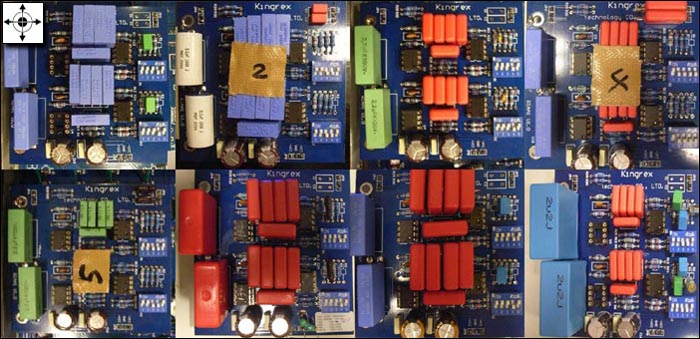
|
As you can see, the major difference are various combinations of op amps, preamplifier IC and capacitors. In the finalized production, OPA134s are the factory-fitted op amps on dip sockets but the preamplifier IC identity has been scraped off and they’re no longer on dip sockets. “This low-noise, high-performance audio preamplifier IC offers exceptional sonic properties for low-signal amplification such as moving-coil transducers and microphone amplifiers. It maintains incredibly high gain at extremely low distortion throughout the entire audio bandwidth. It is a dedicated IC but far superior to other multi-application op amps we have also tested. We believe it is irreplaceable and decided to solder it to the PCB.”
|
|
|
Measuring up: The phono stage report could have stopped here but I kept thinking about how the PREference might measure up against the onboard phono stage of my Restek Sector preamp. No, I don’t like moving turntables around even though mine are relatively easy to level and basically require no setup. But once the thought flashed across the mind, it stuck there like a speck in the eye. Then I saw more specks. What about the MM phono stages of my Symphonic Line RG3 MkIII and Dared MC-7P? I was asking for trouble. Well, one speck at a time. Here’s the list of new software titles I added to the pool.
John Williams: Pops in Space/John Williams/Boston Pops Orchestra [Philips 9500 921] for its balance of detail and dynamics.
Vivaldi: The Four Seasons/Leopold Stokowski/The New Philharmonia Orchestra [Decca PFS 4124] for larger-than-life full-bodied orchestral colors of the most popular Baroque music.
J.S.Bach: Concertos for 3 and 4 Pianos/Beroff/Collard/Rigutto/Tacchino/Jean-Pierre Wallez/Ensemble Orchestral de Paris [EMI 2C 069-73064] for imaging nuances and instrumental articulation.
Galina Vishnevskaya sings Russian Opera Arias/Boris Khaikin/Bolshoi Theatre Orchestra [Angel/Melodiya SR-40220] for the legendary soprano’s emotional and dramatic appeal.
Robert Kurka: The Good Soldier Schweik/Siegfried Landau/Music for Westchester Symphony Orchestra [Candide CE-31089] for wind band virtuosity and soundstage accuracy.
Léo Delibes: Sylvia/Richard Bonynge/The New Philharmonia Orchestra [Decca SXL 6635/6] for everything done right in this 1972 Kenneth Wilkinson recording at Kingsway Hall, London.
|
 |
The Restek Sector teamed up with a Sim Audio Celeste W-4070 SE and Thorens-Restek MMA-5 bi-amping the Mark & Daniel Maximus-Monitor with Omni-Harmonizer. Although the Sector is equipped for MM as well as MC, I decided to only do MC and leave MM to the Symphonic Line and Dared. With the Denon setup matched to an MC setting of 47ohm/100pF, the Sector was soft and warm. Soundstaging was natural with Bach and Delibes, striving for ensemble coherence over image definition. Pianos were sweet, strings mellow and airy. Soprano was a little dark but that helped congeal the tragic drama of Tchaikovsky. Matched to 100ohm/100pF, more brilliance in the upper octaves improved articulation and vividness but Pops in Space became somewhat too bright and shiny during loud passages. Matched to the PREference at 100ohm/100pF, Pops in Space became so bright that I had to disconnect the Omni-Harmonizers to find a better balance. That seemed to work well with all the other titles. The Four Seasons in particular was packed with flying colors, detail and punches sugar-coated with layers of harmonies in sumptuous richness as intended by Mr. Stokowski. It was less airy than the Sector but definitely not deprived of ambience and sense of space. Imaging was more three-dimensional. The four pianos in Bach’s BWV 1065 were discernibly holographic. Russian Opera Arias were sensational and made me believe that Tchaikovsky could well be as melodramatic as Wagner at times.
|
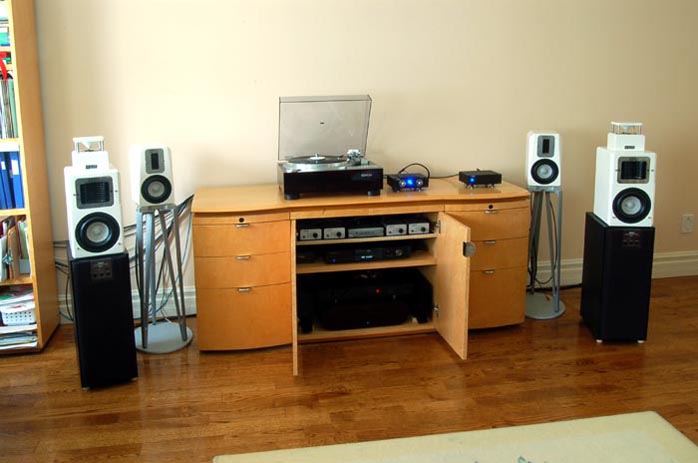 |
The Sector being a 25-year + old model had audible hum even when the phono interconnects’ grounding wire was grounded whereas the PREference had relatively low hum even ungrounded. The Sector phono stage was more susceptive to subsonic activities induced by acoustic feedback. The subsonic loop probably started at Mark & Daniel’s Super X-max woofers fed through the cartridge and was continuously amplified through the circuit in looped chain reactions. I had to carefully monitor the SPL and dared not play too loud. Seeing woofer diaphragms move in and out by almost an inch without audible music was daunting. The PREference was not totally immune to subsonic feedback but somehow in better control. I could turn up the volume to my comfortable listening levels.
|
|
|
 |
The Sector phono stage is a simple circuit relying heavily on a pair of NE5534N op amps to give the PREference some leverage. When confronting the sophisticated MM phono module of the Symphonic Line RG3 and the paired 12AX7 MM phono stage that occupies more than half of the circuit board of the Dared MC-7P, the PREference was hard-pressed to gain the upper hand. However, I reminded myself that the sole reason for this kind of comparison was self enlightenment. Audio isn’t competitive blood sports but entirely for musical appreciation. It’s up to us to appreciate a piece of equipment for what it is rather than find fault. That’s why each time I do comparisons, I hope to learn how to make the best use of the equipment rather than to tease out its worst. I often end up appreciating the intrinsic quality of each piece of equipment more. On that note, the PREference phono stage has delivered on its promise more than its price could have implied. Partnered with the Rega/Elys combo driving the Apogee Centaur Minor through the 300w/4ohm Symphonic Line RG4 MkIII, the PREference was like a stallion running free on the open prairie, unmounted and unreined. The wind band ensemble came to life in Kurka’s Good Soldier Schweik so real that the instruments all leapt off the score. Sylvia was demonstrably the gem of all orchestral gems ever known to man. The Symphonic Line RG3 did everything better, with more finesse and warmth.
|
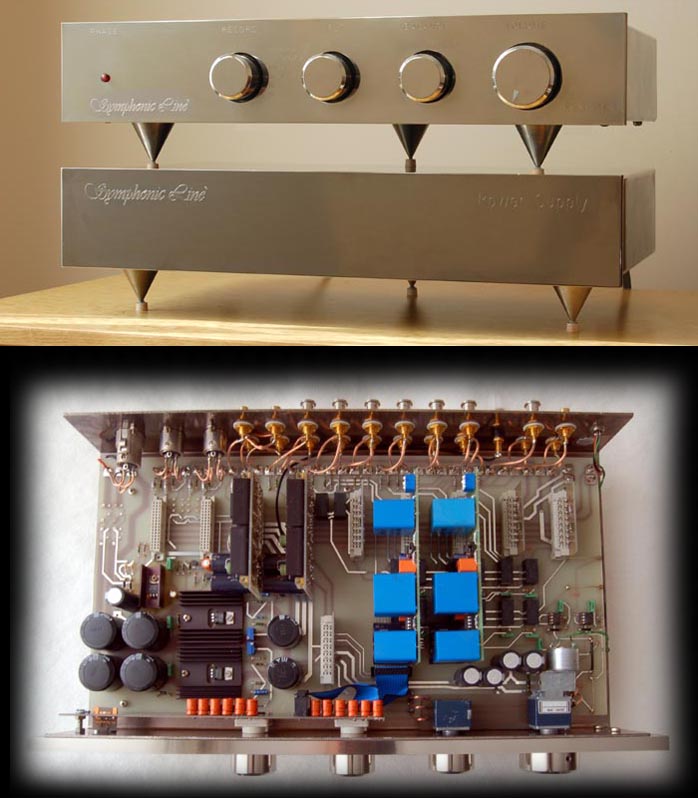 |
Moving venue to the Apogee Stage biamped with two pairs of NuForce Reference 9 V2 further confirmed that Apogees and vinyl were made for each other. The PREference again showed its best in holographic imaging and tonal balance with Bach’s Concerto for Four Pianos; in a deep and broad soundstage with Sylvia; clean taut bass and instrument localization with Pops in Space.
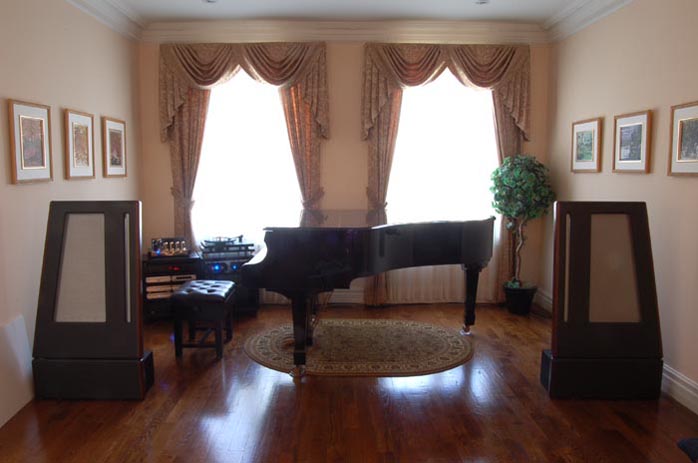
On specs, the Stage is almost identical to the Centaur Minor but somehow I feel that it has the richer midrange and deeper, cleaner bass. That added more oomph to the Kurka wind band, imbuing a more lingering magic around the horns and oboe in “Lament” and delivering a punchier blow to the bass clarinet, contra bassoon and timpani in “March” and “War Dance”. The Four Seasons was transformed into a Technicolor web of sound discretely woven in three dimensions. The Decca Phase 4 Stereo were arguably the most successful 20-track recordings in the analog era and the PREference just provided the best testimonial: lush in taste, dramatic in style without overlooking the minute details.
|
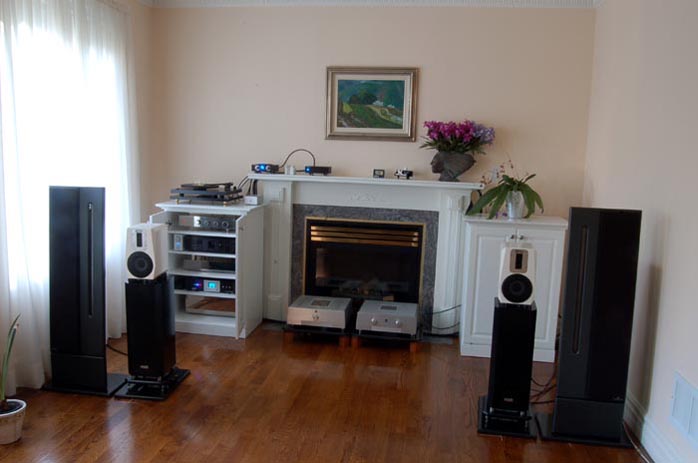 |
When the Dared MC-7P stood in, all the above attributes persisted. The only new ingredient was a good measure of valve bloom that enhanced ambience and made the midrange warmer and the bass deeper. The pianos were pearly compared to the PREference’s crystallization. Soprano and wind band became moister and more liquid. Even Pops in Space evolved into something organic and analog in the traditional sense. Who can argue with a tubed phonostage?
|
 |
  |
 |